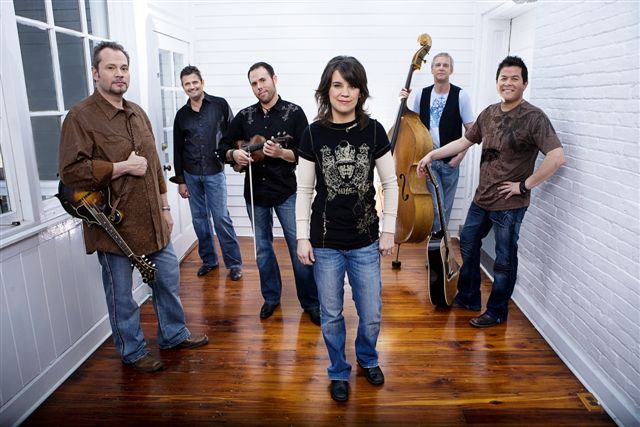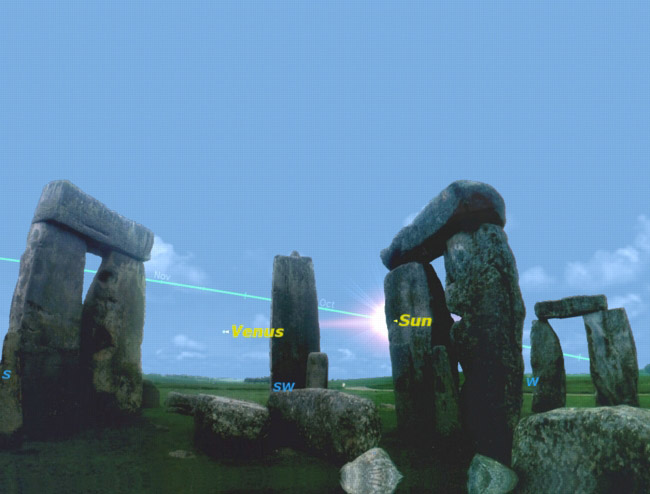DAILEY & VINCENT INAUGURAL HOMECOMING CONCERT RAISES OVER $30,000 FOR HELPING HANDS
Dailey & Vincent’s inaugural Homecoming Concert at the Jackson County High School Football Field in Gainesboro, Tennessee, on October 2 raised $31,693.50 for the Dailey & Vincent Helping Hands Fund.
The Dailey & Vincent Helping Hands Fund, administered through the Cookeville Regional Medical Center Foundation, a 501(c)(3) organization, exists to provide financial assistance to disadvantaged children of Tennessee's Jackson and DeKalb Counties to meet immediate medical, nutritional and educational needs not covered by insurance or other means, while acknowledging the God-given gifts, potential and dignity of each child. Funds raised at the concert, attended by over 2,000 people, will be divided evenly for use in Jackson and DeKalb Counties.
The Quebe Sisters Band opened the show, which was emceed by WSM air personality and Opry announcer Eddie Stubbs.
Dailey & Vincent, who claimed their third consecutive Entertainer of the Year title at the recent International Bluegrass Music Awards, along with Vocal Group and Album of the Year, are quick to credit the homecoming concert's supporters and volunteers. "We want to thank everyone who supported the concert by buying a ticket or making a donation. We're extremely thankful to Cracker Barrel Old Country Store(r) and to Bill Carter and the Rector High School Helping Hands Foundation of Rector, Arkansas, for covering the costs of putting on the concert," says Jamie Dailey.
"Because of their generosity, 100 percent of the ticket sales and other donations went directly into the fund," adds Darrin Vincent. "And we couldn't have staged an event like this without the help of a dedicated team of volunteers, so we want to thank them, as well."
Prior to the concert, Jackson County Mayor John Cason and Gainesboro Mayor John Fox read a proclamation declaring October 2, 2010 as Dailey & Vincent Day in Jackson County and the town of Gainesboro.
***
Grascals, Rounder Part Ways;
Group Has New Projects In WorksTwo-time IBMA Entertainers of the Year The Grascals http://www.grascals.com/ have parted ways with Rounder Records, the label that has been instrumental in the group's success since 2004. "We appreciate them believing in us from the get-go, says The Grascals’,” says mandolin maestro, Danny Roberts. "They've meant so much to us and they supported us completely."
The parting is amicable, according to Grascals manager Kirt Webster. "It was simply time for a change, and both parties realized that. We have nothing but respect for the label and the work they've done for us.”
Moving forward, the Grascals have two new projects on the assembly line. The likely first post-Rounder release is a new album tentatively set for mid-December. For 2011, reliable sources report, talks are underway concerning a possible Grascals TV show.
***
Skywatching Tips: Observing Venus Without Staring at the Sun
By Geoff Gaherty
Starry Night Education
http://www.space.com/spacewatch/venus-skywatching-tips-inferior-conjunction-101006.htmlVenus is currently a prime observing target, but skywatchers should be careful aiming telescopes at the brilliant planet, because it is appearing close to the sun at dusk.
Venus' orbit is closer to the sun than Earth's, so the planet passes between Earth and sun once every orbit. This is known as inferior conjunction (to distinguish it from when Venus passes on the far side of the sun, known as superior conjunction).
Venus was at its greatest brilliancy Sept. 23, and is now moving swiftly toward inferior conjunction Oct. 28.
Since the orbit of Venus is not in exactly the same plane as that of Earth, it usually passes above or below the sun at inferior conjunction. This year it will be passing below the sun.
In addition, at this time of year the plane of the ecliptic is almost parallel to the horizon at sunset. As a result, Venus will be very low in the western sky at sunset, and hence very hard to observe. [Photos of Venus crossing the sun.]
Skywatcher Warning
The trick for observing Venus under these conditions is not to wait until sunset, but to observe the planet while the sun is still above the horizon.
But first, a skywatcher warning: Observing objects while they are close to the sun is very dangerous! This is something only very experienced observers should attempt, and they should take careful precautions to avoid viewing the sun directly.
The trick to use is to position yourself so that the sun is safely behind a nearby building or other obstruction, so that there is no way that you can see the sun itself from your location.
In the accompanying sky map, we've used one of the stones at Stonehenge to block the sun; you can probably do the same with a less glamorous chimney or tower.
Before observing with the naked eye, you may find sweeping with binoculars necessary to initially locate Venus. Use a planetarium program to determine the direction and distance of Venus relative to the sun.
A better technique is to use a telescope equipped with either accurate setting circles or a GoTo computer.
Once located, Venus is readily visible in a clear blue daylight sky.
Venus in October sky
Over the next few weeks Venus moves south and west so that it is directly under the sun Oct. 28, only one percent illuminated and a full arc minute in diameter. Only six degrees separate Venus from the sun.
Since this is less than the width of a binocular field, it is unsafe to attempt to observe Venus this close to conjunction.
The question remains, how close to conjunction can you observe Venus safely?
On Oct. 20, Venus will be 15 degrees away from the sun, probably as close as even the most experienced and careful observer would want to get. Don't risk your eyesight by trying to observe Venus any closer to the sun than this.
Instead, wait until the next inferior conjunction of Venus—June 5, 2012, when Venus will actually pass in front of the sun, and can easily and safely be observed with a standard solar filter.
Enjoying the 2004 Transit of Venus from Stuttgart, Germany, astronomer Stefan Seip recorded this fascinating, detailed image of the Sun. Revealing a network of cells and dark filaments against a bright solar disk with spicules and prominences along the Sun's limb, his telescopic picture was taken through an H-alpha filter. Here, the dark disk of Venus seems to be imitating a giant sunspot that looks perhaps a little too round.
Founder/Publisher/Editor: David McGee
Contributing Editors: Billy Altman, Laura Fissinger, Christopher Hill, Derk Richardson
Logo Design: John Mendelsohn (www.johnmendelsohn.com)
Website Design: Kieran McGee (www.kieranmcgee.com)
Staff Photographers: Audrey Harrod (Louisville, KY; www.flickr.com/audreyharrod), Alicia Zappier (New York)
E-mail: thebluegrassspecial@gmail.com
Mailing Address: David McGee, 201 W. 85 St.—5B, New York, NY 10024





